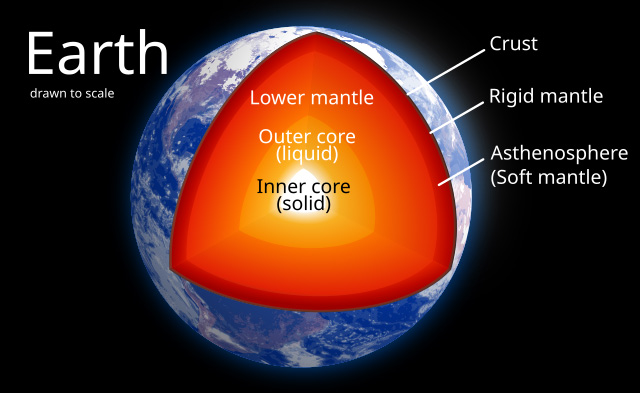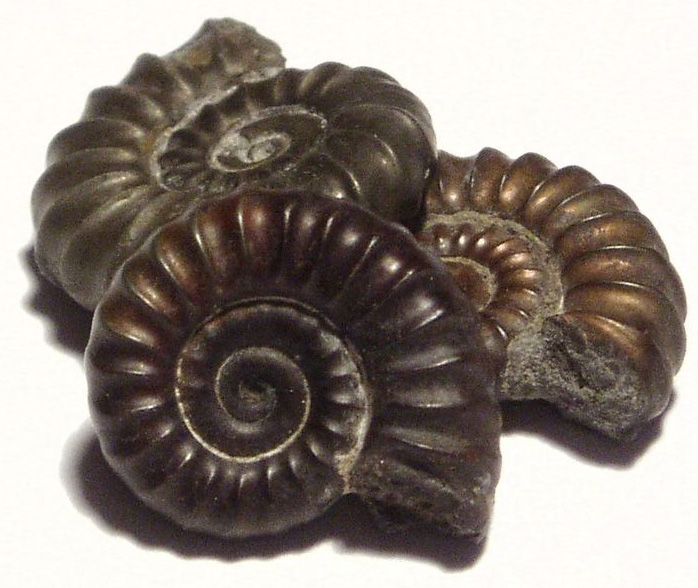GED Science Study Guide: Earth & Space Science
Earth and space science are the studies of how the Earth works and its place in space. In this section, we’ll explore the following topics:
- Weather Patterns
- The Earth’s Structure
- Fossils and Resources
- The Solar System
Weather Patterns
To get us started, you should know that weather and climate are two very different things. Weather refers to atmospheric conditions over a short amount of time (e.g., the weekly weather report), while climate describes changes in weather over long periods of time (e.g., decades, centuries, or longer).
Here are some terms you need to know for the GED science test. Fortunately, if you’ve ever watched a weather report, you should already be familiar with a few of them.
- Air mass: A body of air with the same temperature and humidity.
- Atmosphere: The mix of gases (e.g., nitrogen, oxygen, carbon dioxide) that makes up the air we breathe.
- Front: When two air masses combine, they create a weather front, such as a storm.
- Hurricane: Violent, slowly rotating storms that form in the Atlantic Ocean. Meteorologists refer to hurricanes as “typhoons” if they form in the Pacific Ocean.
- Meteorologist: A scientist who studies the weather and makes weather forecasts.
- Precipitation: When rain or snow falls from the sky.
The Earth’s Structure

Source: IsadoraofIbiza, CC BY 3.0, via Wikimedia Commons
Like an onion, the Earth has layers. The topmost layer (i.e., the one you’re on right now) is the crust. The crust is made up of tectonic plates that float over the soft mantle. Earthquakes and volcanoes are the result of plates rubbing up against one another. Volcanoes can also form in areas of a plate where the crust is thin.
The Earth gets hotter the further you travel inside it. In the outer core, molten iron rotates slowly, producing a magnetic field that protects Earth from harmful solar storms and radiation. Without the magnetic field, the Sun’s solar storms would blast away the atmosphere.
Note
Scientists know that the Earth has these internal structures despite never drilling that far down due to measuring seismic waves produced by earthquakes. These waves travel through different substances at different speeds. As a result, we know what’s inside the Earth despite never seeing it ourselves.
Fossils and Natural Resources

Source: Zephyris, CC BY-SA 3.0, via Wikimedia Commons
When you look at a fossil like the one above, you may assume that you’re looking at the remains of a long-extinct organism. However, this is not always correct. Fossils like these are more like imprints rather than remains. When fossilization happens, minerals in the environment replace those that once made up an organism. The end result is a rock that has the same structure or features as something that lived so long ago.
Most organisms that lived on Earth over the last three billion years never became fossils. Instead, they became fossil fuels (e.g., coal and oil). Pressure and heat over millions of years turned plant and animal remains into the fuel we use to create electricity. We can use these “leftovers” as fuel because living things contain a high percentage of carbon. Fossil fuels contain large chains of carbon elements that burn easily, creating heat.
Oil and coal are not just fossil fuels. They are just two of many natural resources — anything people need to survive or can use to make their lives easier. These include:
- Air
- Water
- Wind
- Sunlight (although people can’t perform photosynthesis, we need sunlight to make vitamin D!)
- Plants
- Animals
- Minerals
Natural resources fall into one of two categories.
| Renewable | Nonrenewable |
Renewable resources have an unlimited supply. They include:
Solar panels and wind turbines create electricity from renewable resources. |
Nonrenewable resources are those where there is a fixed, finite amount on Earth. They include:
Most traditional power plants burn or use nonrenewable resources. |
Using too many nonrenewable resources can lead to pollution, such as the byproducts of burning coal and oil entering the atmosphere, water, and soil. People can protect the environment through conservation, or using nonrenewable resources responsibly and enacting policies to protect the environment. In the 20th century, people and nations worked to conserve the environment by:
- Requiring catalytic converters on cars (reducing smog)
- Recycling paper and metal (reducing the need for deforestation and mining)
- Requiring sewage treatment plants (reducing biological and industrial contamination in the environment)
Some people may think that pollution created somewhere far away is no big deal. However, the carbon and water cycles mean that all pollution, even pollution released on the other side of the planet, can eventually end up in your community.
| The Carbon Cycle | The Water Cycle |
|
|
These two essential cycles sustain all life on Earth. If pollution were to enter at any stage of either cycle, that pollution would eventually contaminate everything.
The Solar System
The Solar System has eight planets that revolve around the Sun.
The inner planets (all with rocky surfaces) include:
- Mercury: closest to the sun, no atmosphere
- Venus: thick atmosphere, about the same size as Earth, very hot
- Earth: you are here
- Mars: 1/3 the size of Earth, red color from rust, thin atmosphere
Between Mars and Jupiter is the asteroid belt, which is a collection of leftovers that did not form into planets billions of years ago. Unlike what you may have seen in the movies, navigating through the Asteroid Belt isn’t very difficult. Many probes have done so on their way to explore the outer planets and beyond.
The outer planets (all gas giants) include:
- Jupiter: largest planet, many satellites
- Saturn: famous for its extensive ring system and many satellites
- Uranus: often also called an “ice giant,” lowest minimum temperature
- Neptune: farthest from the Sun, only other “ice giant”
Note
You may have grown up learning that Pluto was the farthest planet from the Sun. However, in 2006, the world’s leading astronomical society decided that Pluto no longer qualified for planet status. Poor Pluto.
Satellites refer to moons. However, only Earth’s moon is referred to with the proper noun “Moon.” The Moon revolves around Earth every 29 days. We see only one side of the Moon because it takes the same amount of time to rotate as it does to revolve around the Earth. Even though we can’t see the dark side of the Moon, it receives light for half of each lunar rotation. The Moon’s gravity is very weak but pulls on Earth’s oceans, creating the daily tides.
Below, you’ll find our earth and space science review quiz to test yourself on the content we’ve just covered. Time yourself, answer each question carefully, and read the explanations to ensure you know the reasoning behind each answer.